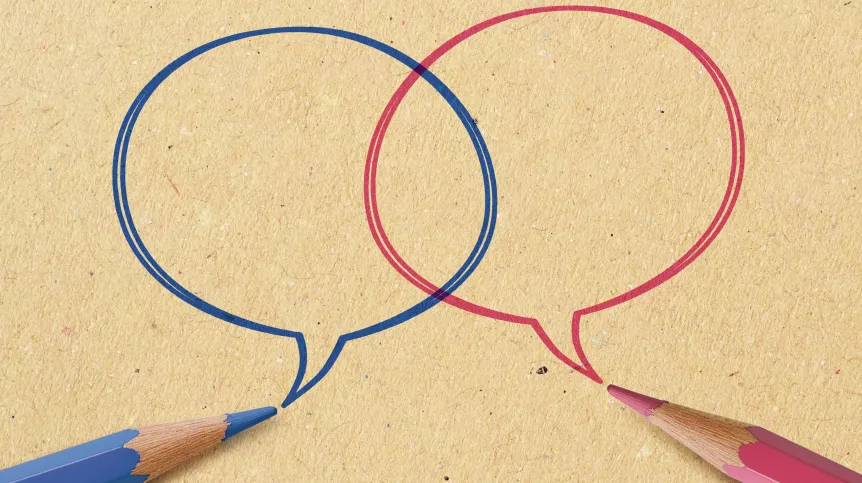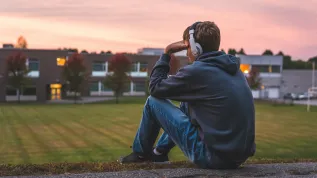
Despite being aware of gender stereotypes and declaring willingness to oppose them, Polish teachers tend to reinforce them rather than eliminate them show researchers from the Maria Grzegorzewska University in Warsaw.
The study’s lead author Dr Aleksandra Gajda from the Institute of Education at the Maria Grzegorzewska University said: “Both the content of textbooks and the unconscious actions of teachers consolidate the social division of gender roles, which, in principle, is still far from equality.
“In addition, children burdened with the baggage of knowledge about the social life they have brought from school grow up and as adults function exactly as society requires of them.
“Of course, it is worth noting that this is a situation of continuous, social dynamics and changes.”
In the paper published in the prestigious journal PLoS One (https://doi.org/10.1371/journal.pone.0269007) Dr. Gajda and her team examined the data they collected in the context of the concept of a vicious circle of stereotypes and self -fulfilling prophecies in education.
They found that since students in Organisation for Economic Co-operation and Development (OECD) countries spend an average of more than 7,500 hours in classes during their primary and lower secondary compulsory education, school is one of the most important socialisation environments in which girls and boys learn how to function in society in certain roles.
The researchers said: “As an important area of social life, school reflects all the mechanisms that one can encounter in society, including gender relations, social gender roles and even gender stereotypes. These are complex sets of beliefs about individual characteristics, including competences, abilities, interests and roles performed by women and men.”
According to stereotypes related to masculinity, men are achievement-oriented, strong and have more agency. Stereotypical women are relational, emotional, caring for others, which said Dr. Gajda, “despite the passage of time are beliefs that remain.”
The study group consisting of 34 classes of 7th and 8th graders from 17 primary schools in small, medium and large cities in central Poland was selected randomly. During six different lessons, the researchers observed interactions between teachers and students, and then conducted detailed interviews with 25 teachers of these classes; all were mathematics or Polish language teachers.
Dr. Gajda said: “The selection of the last grades of primary schools was based on the analysis of literature on the expression of gender stereotypes and social roles.
“Thirteen-fourteen year old adolescents begin to consciously perceive and manifest social gender roles. Our goal was to capture the initial, most visible behaviours of girls and boys at school. Of course, the behavioural differences can be seen from the beginning of school education, but they gain strength and become noticeable for educators during the adolescence.”
After collecting all the necessary data and conducting a series of observations, it turned out that with the exception of one person, virtually every teacher undertook some activities related to gender stereotypes.
Gajda said: “There were both behaviours focused on combating these stereotypes and those that could (unconsciously) reinforce them.
“An example of good practice was the teacher who talked to students about the long way to gaining voting rights by women. One of the mathematicians presented herself as a role model, explaining that since she had graduated from engineering studies, then every girl had such a possibility. Teachers also often encouraged students to go beyond the well-known behavioural patterns, trying, for example, to give courage to girls giving answers.”
She added that sometimes such actions, despite being taken in good faith, could do more harm than good. That was the case, for example, when the teacher asked boys not to answer first and give girls a chance.
Gajda said: “Such behaviour only reinforces inequality in class between boys and girls, putting the latter slightly lower in +hierarchy+ and pointing to the need to help them prove themselves.”
Gender polarization can also be deepened by the division into same-sex teams when working in groups. Sometimes it is the teachers themselves who encourage this division, organizing work based on the rivalry between girls and boys, and sometimes students, given the freedom to form groups, choose the people closest to them, often of the same sex. This is quite a limiting situation as it prevents children from learning from each other and leaves them in their established gender patterns.
The analysis showed that the surveyed teachers had little awareness of the stereotypical thinking they used in their contacts with students.
Gajda said: “Some of them were obviously more aware and their statements emphasized the attempts to deal with gender polarization in the class, but most of them did not have such awareness.
“These people perceived the observed behaviours of students as the current status quo and saw no particular point in changing them. Interestingly, after the interview, some teachers declared greater attention to the subject of gender stereotypes, both in their work with students and when reading textbooks. So perhaps our study will at least partially change the thinking of educators in this area.”
In addition, the observations of lessons carried out as part of the study show that teachers more often encourage girls to cooperate, while encouraging boys to compete. These are also activities that reinforce gender polarization and stereotypes.
The authors of the study also looked at school textbooks in the context of different gender representations. The largest research project so far - in Poland - showing the scale of inequalities in textbooks was the study by the team of Professor Iwona Chmura-Rutkowska from the Adam Mickiewicz University in Poznań. Her analysis of a selected sample of textbooks (for all stages of education and all subjects) showed that in virtually every school book there were inequalities and stereotypical perception of gender.
Gajda said: “I conducted similar research on aid for 7th and 8th grades, introduced just after the 2017 education reform.
“I wanted to check if gender representation in those new textbooks was similar or different from the results obtained by Professor Iwona Chmura-Rutkowska. As it turns out, little has changed. Women are still given the role of mothers and housewives, and men - breadwinners.
“It is also worth emphasizing that studies on textbooks are conducted all over the world and, to a greater or lesser extent, they identify similar problems related to gender inequalities.”
She continued: “In some countries, there are practices during teacher education to prevent the perpetuation of gender stereotypes in students, but these are mainly grassroots initiatives, such as the REFLECT programme in Austria. Certain elements at the stage of education and training are also introduced in Scandinavia, for example in Norway; Scandinavian countries are generally considered to have the highest degree of gender equality.”
Gajda added that gender stereotypes in schools are still a big problem that may affect the future life of young people. She said: “In fact, socialization to gender roles begins very early in life, for example when choosing toys in a store. On the shelf for girls you will find dolls, colouring books and possibly jewellery-making sets. On the shelves for boys there are tools, excavators, bricks and action figures.
“Thus equipped, children enter the school, which again, instead of allowing them to benefit from a wide range of activities and encouraging them to go beyond the known and comfortable roles, only reinforces the divisions.
“Look at any offer of extracurricular activities. Boys are offered, for example, Minecraft courses, programming with the use of Lego, martial arts. And girls? Dance, art and theatre courses. Such self-awareness and a sense of self-efficiency in a specific field are formed from an early age, but the school years certainly reinforce this in children. In addition, it unfortunately often turns out that this belief accompanies students throughout the years receiving education, until they choose a professional career. There would be nothing wrong with that, as long as the sense of effectiveness in a particular field was based mainly on individual predispositions, abilities and skills. And unfortunately it often depends on gender.”
In addition, studies (such as the London Office for Standards in Education) show that girls' lower achievements in science may be due to teachers' lower expectations of them. It is the same with boys and the humanities.
Gajda said: “In the first step, while observing the social world including the behaviours of people of different sexes, we see, for example, that boys are more active and more involved in science classes; show greater ease of learning. In the second step, we recognize that the observed phenomena result from nature and are not the result of many previous processes. Thus, we interpret the +model mind+ of boys and attribute it to all of them. At the same time, we tell the girls that they are not predisposed to excel in exact sciences.
“In the next stage of the process, these traits are normalized, so there is social conformism and pressure that in order to confirm one's masculinity and femininity, it is necessary to meet social expectations related to interest in science, for example. Since the failure to meet social expectations and the destruction of stereotypical images results in social sanctions, the vast majority of people conform to these social ideals and meet expectations, they enter the gender roles. Thus, the circle of the stereotype closes and the whole mechanism drives itself.”
Dr. Gajda added that only women teachers took part in the study. She said: “We did not plan to include women only, but it turned out that there was not a single man in the selected sample. The percentage of male teachers is still much lower than that of women, especially in primary schools, which is also significant in relation to the choice of teaching profession.
“Future research with the participation of men will certainly expend the current state of knowledge, the more so that, for example, the results of research conducted by Professor Dorota Turska from the Maria Curie-Skłodowska University show slightly different attitudes of male teachers towards students.”
PAP - Science in Poland, Katarzyna Czechowicz
kap/ ekr/ kap/
tr. RL













